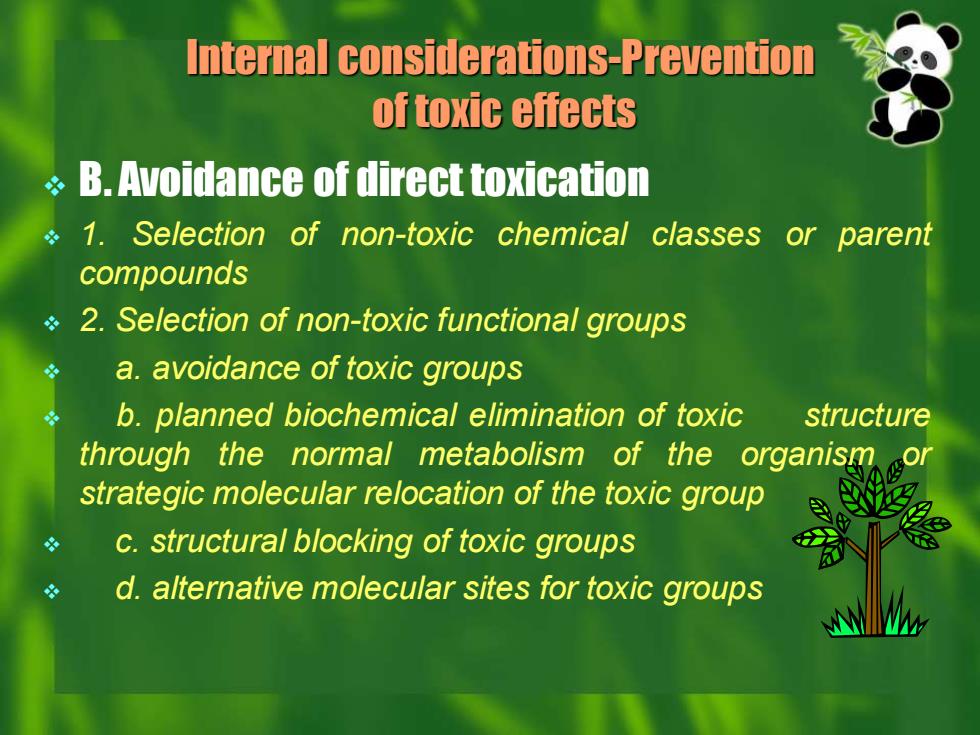
❖ B. Avoidance of direct toxication ❖ 1. Selection of non-toxic chemical classes or parent compounds ❖ 2. Selection of non-toxic functional groups ❖ a. avoidance of toxic groups ❖ b. planned biochemical elimination of toxic structure through the normal metabolism of the organism or strategic molecular relocation of the toxic group ❖ c. structural blocking of toxic groups ❖ d. alternative molecular sites for toxic groups Internal considerations-Prevention of toxic effects
❖ B. Avoidance of direct toxication ❖ 1. Selection of non-toxic chemical classes or parent compounds ❖ 2. Selection of non-toxic functional groups ❖ a. avoidance of toxic groups ❖ b. planned biochemical elimination of toxic structure through the normal metabolism of the organism or strategic molecular relocation of the toxic group ❖ c. structural blocking of toxic groups ❖ d. alternative molecular sites for toxic groups Internal considerations-Prevention of toxic effects
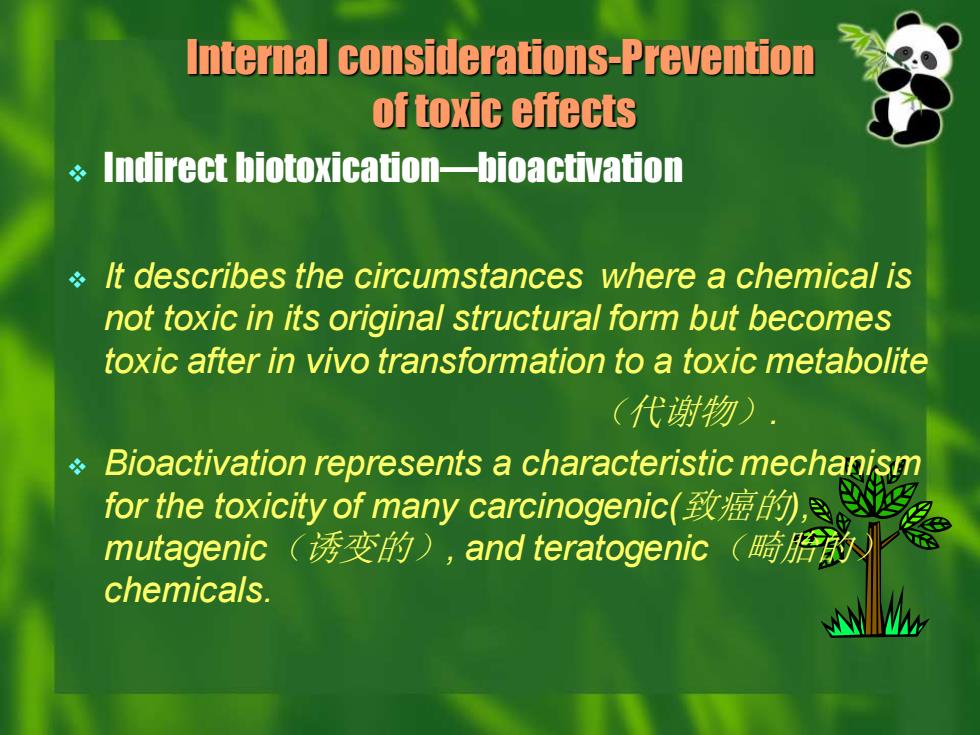
❖ Indirect biotoxication—bioactivation ❖ It describes the circumstances where a chemical is not toxic in its original structural form but becomes toxic after in vivo transformation to a toxic metabolite (代谢物). ❖ Bioactivation represents a characteristic mechanism for the toxicity of many carcinogenic(致癌的), mutagenic(诱变的), and teratogenic(畸胎的) chemicals. Internal considerations-Prevention of toxic effects
❖ Indirect biotoxication—bioactivation ❖ It describes the circumstances where a chemical is not toxic in its original structural form but becomes toxic after in vivo transformation to a toxic metabolite (代谢物). ❖ Bioactivation represents a characteristic mechanism for the toxicity of many carcinogenic(致癌的), mutagenic(诱变的), and teratogenic(畸胎的) chemicals. Internal considerations-Prevention of toxic effects
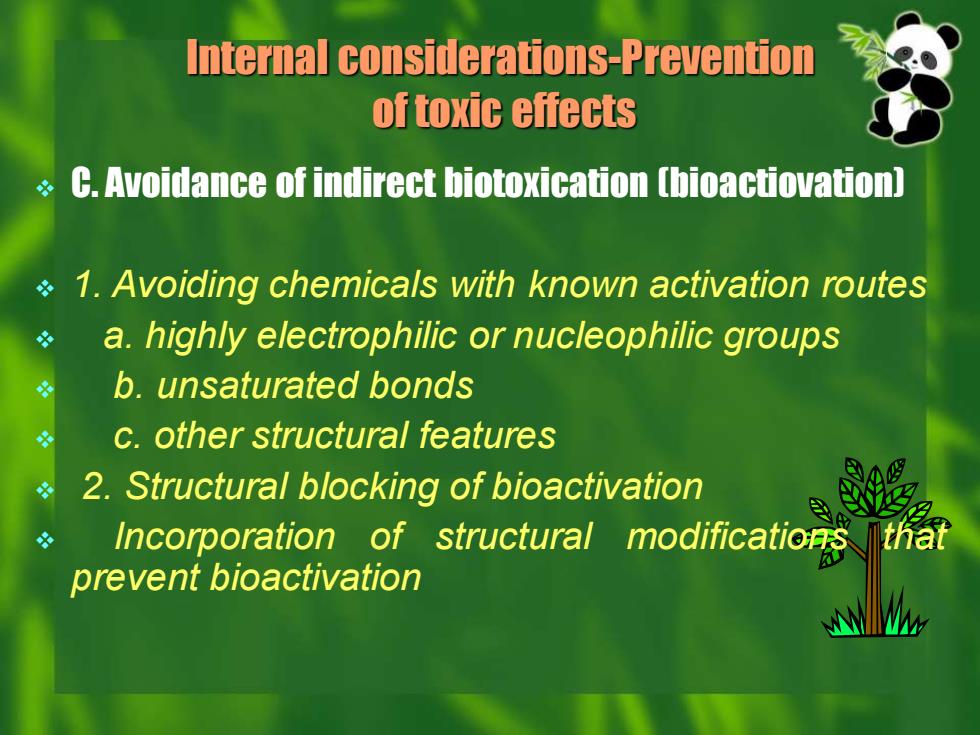
❖ C. Avoidance of indirect biotoxication (bioactiovation) ❖ 1. Avoiding chemicals with known activation routes ❖ a. highly electrophilic or nucleophilic groups ❖ b. unsaturated bonds ❖ c. other structural features ❖ 2. Structural blocking of bioactivation ❖ Incorporation of structural modifications that prevent bioactivation Internal considerations-Prevention of toxic effects
❖ C. Avoidance of indirect biotoxication (bioactiovation) ❖ 1. Avoiding chemicals with known activation routes ❖ a. highly electrophilic or nucleophilic groups ❖ b. unsaturated bonds ❖ c. other structural features ❖ 2. Structural blocking of bioactivation ❖ Incorporation of structural modifications that prevent bioactivation Internal considerations-Prevention of toxic effects
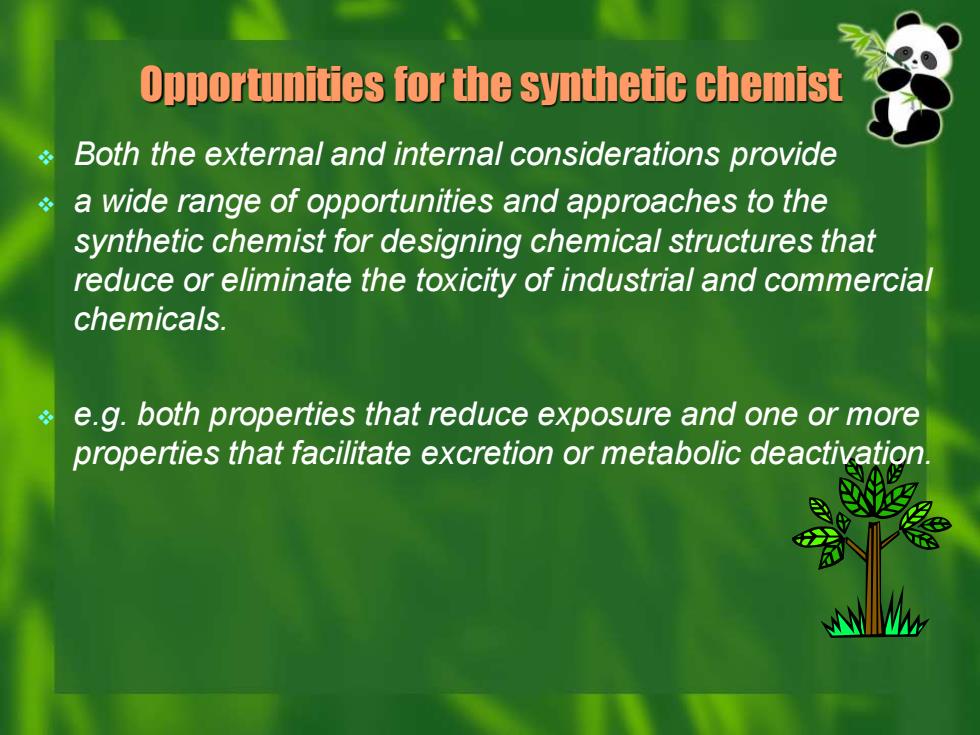
Opportunities for the synthetic chemist ❖ Both the external and internal considerations provide ❖ a wide range of opportunities and approaches to the synthetic chemist for designing chemical structures that reduce or eliminate the toxicity of industrial and commercial chemicals. ❖ e.g. both properties that reduce exposure and one or more properties that facilitate excretion or metabolic deactivation
Opportunities for the synthetic chemist ❖ Both the external and internal considerations provide ❖ a wide range of opportunities and approaches to the synthetic chemist for designing chemical structures that reduce or eliminate the toxicity of industrial and commercial chemicals. ❖ e.g. both properties that reduce exposure and one or more properties that facilitate excretion or metabolic deactivation
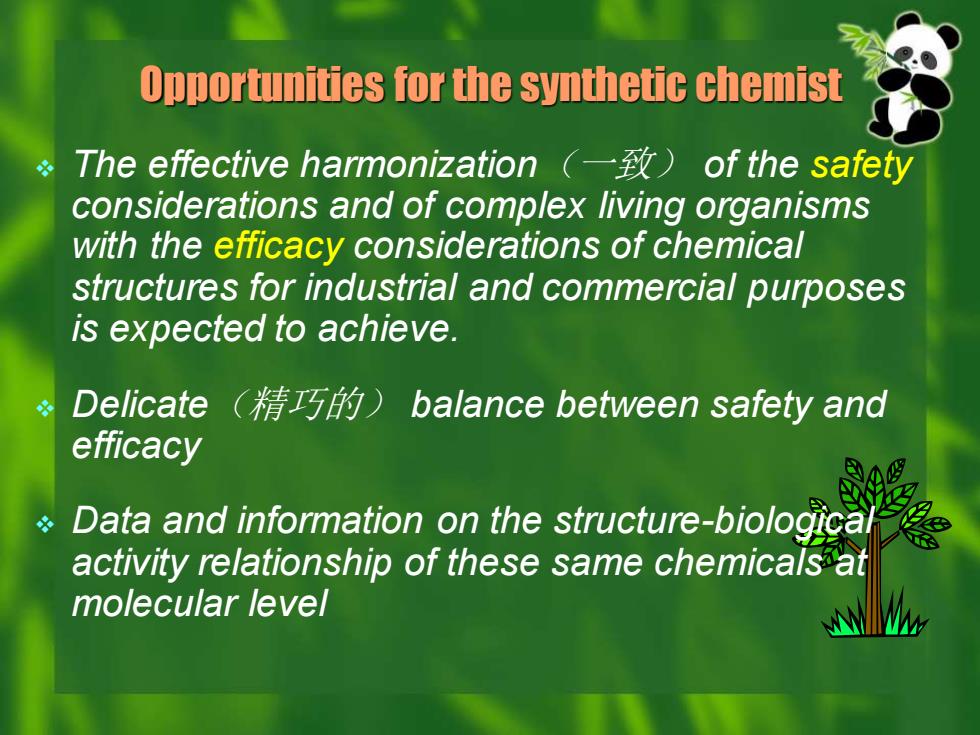
❖ The effective harmonization(一致) of the safety considerations and of complex living organisms with the efficacy considerations of chemical structures for industrial and commercial purposes is expected to achieve. ❖ Delicate(精巧的) balance between safety and efficacy ❖ Data and information on the structure-biological activity relationship of these same chemicals at molecular level Opportunities for the synthetic chemist
❖ The effective harmonization(一致) of the safety considerations and of complex living organisms with the efficacy considerations of chemical structures for industrial and commercial purposes is expected to achieve. ❖ Delicate(精巧的) balance between safety and efficacy ❖ Data and information on the structure-biological activity relationship of these same chemicals at molecular level Opportunities for the synthetic chemist